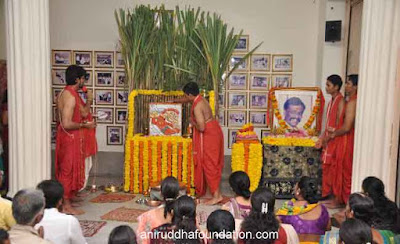Sadguru Shree Aniruddha has said this many a time, the journey of every person on the Bhaktimarg (path of devotion), each step of his on this path is put forth only as per the guidance of Lord Hanumanta.
Shree Hanumanta himself holds every Shraddhavan by the finger and walks him or her through the Bhaktimarg - thus, the bhakti (devotion) of Lord Hanumanta proves to be essential. Shree Hanumanta, among the Panchguru (five gurus) of Shree Aniruddha, is His Rakshakguru (The guru who protects).




